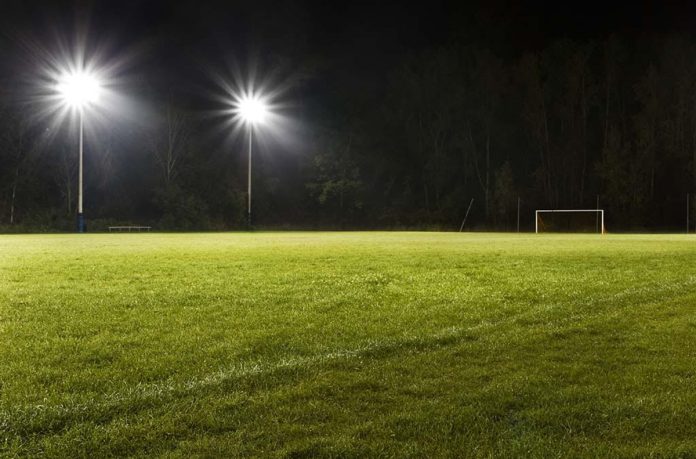LED stadium lights – the game-changers in sports facility lighting! These high-powered marvels aren’t just about illuminating the field; they’re a cost-effective revolution. They outshine traditional metal halide and halogen lights in every way:
Energy Efficiency: LED stadium lights are energy-saving champs, gobbling up to 75% less power than their old-school counterparts. That means substantial savings on energy bills for sports facilities, a win for the bottom line.
Longevity: These lights are marathon runners with lifespans stretching up to 50,000 hours. In comparison, metal halide lights whimper at 10,000 hours, while halogens barely reach 2,000. Less frequent maintenance and replacements? More cash in the pocket.
Light Quality: Let’s talk lumens. LED stadium lights produce brighter, more uniform light. That’s a slam dunk for players and fans who thrive on impeccable visibility.
Glare Reduction: No more squinting or uncomfortable glare. LED stadium lights are gentle on the eyes, enhancing player safety and fan comfort.
But wait, there’s more! LED stadium lights aren’t just about cost savings; they’re also eco-warriors. They’re cooler, generate less waste, and don’t play host to toxic mercury.
Cost Savings Galore: Let’s dive into the savings. A US Department of Energy study revealed that a typical high school football stadium could stash over $100,000 annually by switching to LED stadium lights. The magic happens on two fronts: energy and maintenance. You can consult stadium lighting manufacturers to find cost-saving LED stadium lights.
As mentioned, LED stadium lights are energy sip sippers. That translates into a substantial drop in energy costs. Plus, with their extended lifespan, maintenance and replacement expenses take a nosedive.
Environmental Perks Mother Earth gives a nod of approval to LED stadium lights. They’re greener in three key ways:
Less Heat: LED lights are efficiency ninjas, converting more electricity into light and less into heat. It’s a win for both energy efficiency and keeping your stadium cooler.
Reduced Waste: Say goodbye to frequent bulb replacements. LED lights are in it for the long haul, producing less waste than their traditional counterparts.
No Mercury: LED stadium lights don’t house toxic mercury, unlike traditional lighting. That means no environmental pollution to worry about.
In Conclusion, LED stadium lights reign supreme in the grand arena of sports facility lighting. They’re cost-effective, kind to the planet, and outshine the competition in every aspect. If you’re pondering a lighting upgrade, LED stadium lights are your slam dunk choice. They’ll cut energy bills, slash maintenance costs, and provide superior lighting for players and fans.
Additional LED Stadium Light Advantages Wait, there’s more! LED stadium lights bring additional perks to the table:
Fan Bliss: Brighter, more uniform lighting means a better fan experience. No more straining to see the action – it’s all crystal clear.
Property Value Boost: A well-lit stadium is a more valuable property. By embracing LED stadium lights, you’re upping your facility’s worth.
Green Credentials: LED lights are your partners in reducing your sports facility’s carbon footprint. Lower energy consumption shows your commitment to a sustainable future.
Choosing the Right LEDs
When diving into the LED stadium light pool, remember to consider:
Wattage: The wattage determines how bright your LED stadium lights will shine. Match it to your stadium’s size and desired illumination level.
Beam Angle: Choose the beam angle wisely to ensure even and efficient lighting across your stadium. Don’t leave any nook or cranny in the dark.
So, there you have it – LED stadium lights, the MVPs of sports facility lighting, saving you money, pleasing fans, and giving the environment a high-five. It’s time to light up your stadium and let the games begin!







